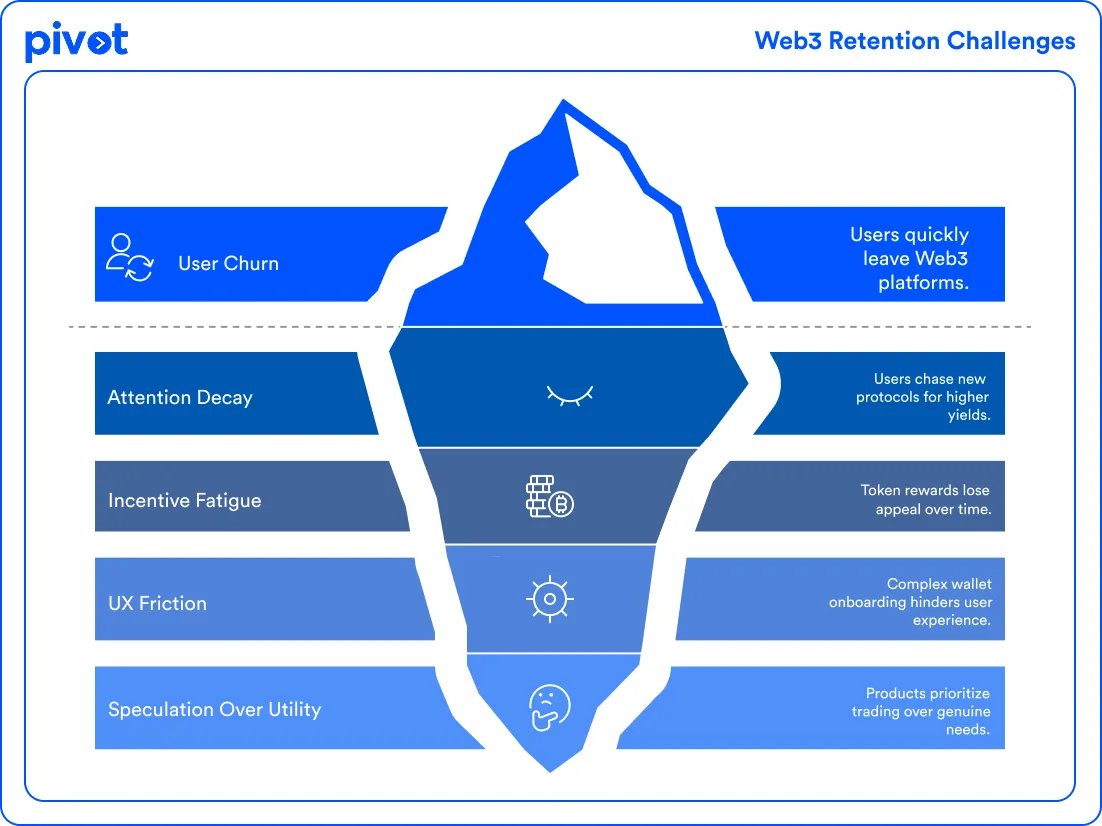Boss Nha Cai: Your Guide to Winning Big
Explore the latest tips and trends in online betting.
Retaining Users in Web3: Because Ghost Towns Aren't a Good Look
Unlock the secrets to keeping users engaged in Web3! Discover strategies to avoid your platform becoming a ghost town.
Understanding User Retention Strategies in Web3: Key Techniques for Success
User retention is a critical factor for success in the Web3 landscape, where decentralization and community engagement play pivotal roles. Understanding user retention strategies can significantly enhance the longevity and profitability of a project. One of the key techniques is to incentivize user participation through rewards and recognition. This can be achieved by implementing a robust system of loyalty rewards that allows users to earn tokens or unique benefits based on their level of engagement. By ensuring users feel valued and appreciated, projects can foster a sense of community that encourages continuous interaction and loyalty.
Moreover, leveraging effective communication channels is essential for retaining users in the Web3 ecosystem. Establishing a transparent and accessible way of connecting with users can build trust and promote long-term relationships. Techniques such as regular updates, community feedback loops, and responsive support systems can significantly enhance user satisfaction. It's also crucial to have an active presence on social media and community forums, allowing for direct engagement and the cultivation of a vibrant user community. Ultimately, implementing these user retention strategies will be key to achieving sustained success in the fast-evolving world of Web3.

Counter-Strike is a highly popular team-based first-person shooter game that has captivated gamers since its inception. Players can engage in various modes, focusing on objectives like bomb defusal or hostage rescue. For added fun and bonuses, players can use the bc.game promo code to enhance their gaming experience.
The Importance of Community Engagement: How to Keep Your Web3 Users Active
In the evolving landscape of Web3, community engagement plays a pivotal role in sustaining user activity and fostering loyalty. Building an engaged community not only enhances the overall user experience but also encourages users to contribute, share, and promote your platform. To achieve this, it is essential to establish clear communication channels such as forums, social media groups, and newsletters. By integrating user feedback into your decision-making processes, you create an environment where users feel valued and invested in the platform's success.
Implementing effective strategies for community engagement can significantly enhance user retention. Consider organizing regular events, such as webinars and AMAs (Ask Me Anything), which provide opportunities for direct interaction between developers and users. Additionally, creating incentive-based programs, such as token rewards for active participation, can encourage sustained user involvement. As a result, a vibrant and active community not only transforms users into advocates but also attracts new participants, ultimately bolstering your Web3 project's growth and visibility.
What Can We Learn from Successful Web3 Projects About User Retention?
Successful Web3 projects have demonstrated that user retention hinges on several key factors. First and foremost, establishing a strong sense of community is essential. Projects like Axie Infinity and Decentraland have thrived by creating engaging platforms where users feel a sense of belonging and active participation. This is achieved through strategies such as regular community events, AMAs (Ask Me Anything), and direct communication channels with developers. By fostering a community, these projects encourage users to remain engaged and invested over time, highlighting the significance of community in user retention.
Another critical lesson from these successful Web3 initiatives is the importance of continuous value creation. Projects such as Uniswap and Chainlink have maintained user interest by innovating their services and regularly introducing new features. For instance, through liquidity mining and governance token distributions, users are given ongoing incentives to not only use the platform but also to advocate for it. This focus on evolving user experience and aligning incentives with user needs effectively enhances user retention, making it imperative for upcoming Web3 projects to adopt similar practices.